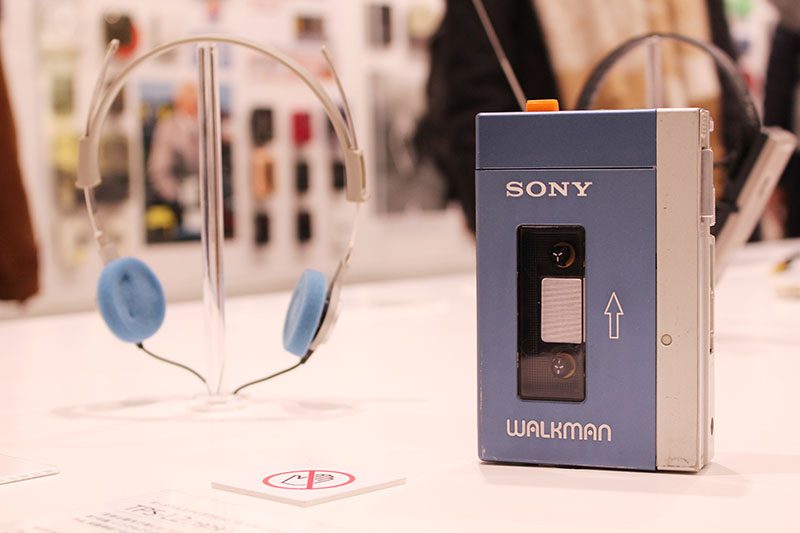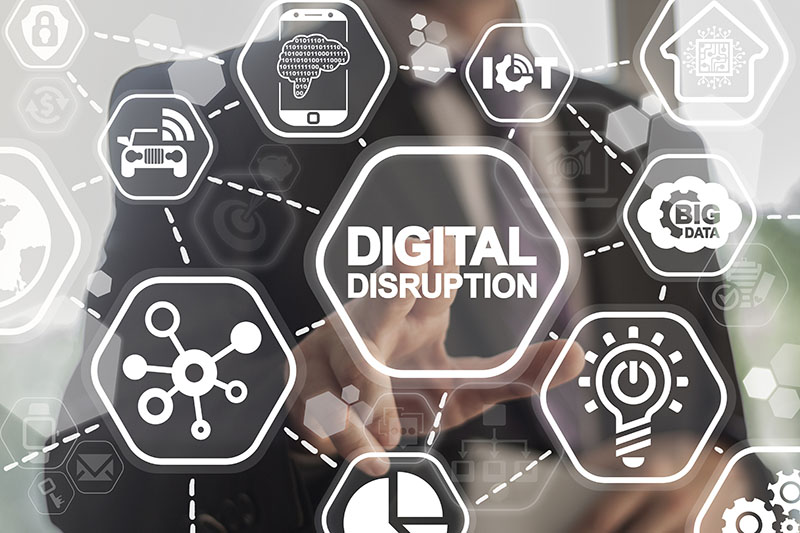It is not the strongest or the most intelligent who will survive but those who can best manage change. – Charles Darwin
Change, in all forms, is a familiar theme at Overabove and in all of today’s world of marketing. Everything is changing around us, yet few business leaders recognize the impact. Even fewer critically comprehend how to take advantage of these dramatic forces.
An analysis of the history of technology shows that technological change is exponential, contrary to the common-sense “intuitive linear” view. So we won’t experience 100 years of progress in the 21st century — it will be more like 20,000 years of progress (at today’s rate). – Ray Kurzweil

Ned Snowman / Shutterstock
The timeline of the past century is littered with a steady stream of technology disruption and transformation. Often, we forget how much change we have witnessed; we only remember the “new normal.” You only have to study the music industry to see the rapid change. The progression from vinyl records to tapes (8-track and cassette), then the magic of laser-powered Compact Discs gave way to the game-changing iPod in 2001. Shortly after, peer file-sharing became popular with Napster, culminating today with Pandora, Spotify and many more streaming options. That’s a long journey from Mr. Edison’s phonograph 140 years ago – and yet most of the change happened in the last few decades.
The same pattern is evident when reflecting on photography, newspapers, publishing, shopping, travel and taxi industries. They all have transformed in unimaginable ways.
Disruption
Often, we think of technology as disruptive. It is more appropriate to consider the new business models as creating the disruption. Technology will always evolve, but organizations can sometimes get stuck in old ways of thinking. We are not used to thinking in exponential terms, but we have to disrupt ourselves before others do it for us!
Jack Welch, the iconic CEO from GE, once proclaimed, “If the rate of change on the outside exceeds the rate of change on the inside, the end is near.”
The modern drivers of this era of disruption are generally seen as technological innovation, social networks, user-friendly apps, mobile devices and value shifts (such as the sharing economy).
CNBC publishes a list of disruptors annually – here’s the top 10 for 2017:
| 1. Airbnb | It’s a $31 billion trip |
| 2. Lyft | The car-ownership killer with a conscience |
| 3. WeWork | Reworking the office |
| 4. Grab | Uber-growth for an Asian ride-share rival |
| 5. Uptake Technologies | Capturing Warren Buffett’s billionaire energy |
| 6. Houzz | The homiest e-catalog |
| 7. Ginkgo Bioworks | Growing products in the lab |
| 8. Palantir | Technologies Tracking the world’s secrets |
| 9. Cylance | Making cyber threats idle |
| 10. Udacity | Closing the skills gap |
So how does this apply to marketing?
All of this change is significantly impacting the way we view marketing and selling. Consider Artificial Intelligence (AI). We now have access to advancements like digital assistants with natural language processing (Amazon’s Alexa, for example), plus innovative image recognition and advanced data analytics tools.
AI has even reinvented classic email marketing with personalized subject lines, calls to action and dynamic send time optimizations, allowing a message to be delivered for every recipient when they are most likely to open. Humans could never effectively achieve this!
Marketers have more insight-related tools at their disposal that facilitate true data-driven decision-making, but AI is vital for integrating across tools, datasets and platforms.
Demand-side platforms analyze which ad impressions are worth bidding on and at what price, all within milliseconds. Predictive analytics uses machine learning to forecast future outcomes based on historical behavioral patterns.
Thousands of new AI-powered software tools are finally enabling one-to-one marketing. AI will change how consumers interact with technology, information, services and even brands themselves.
What can I do about it?
In short, stay educated. Start with small projects and dig deep into the disruptions you find interesting. Learn more about AI or any number of other forces of innovation that are emerging right now: big data, virtual and augmented reality, the Internet of Things, Blockchains, voice assistants, robotics, 3D printing, autonomous vehicles, quantum computing… the list goes on. All of these forces are working in tandem, and each has the potential to drastically change the world.
Not sure where to start? Stay tuned for future posts highlighting some of the disruptions we, as marketers, are digging into.
